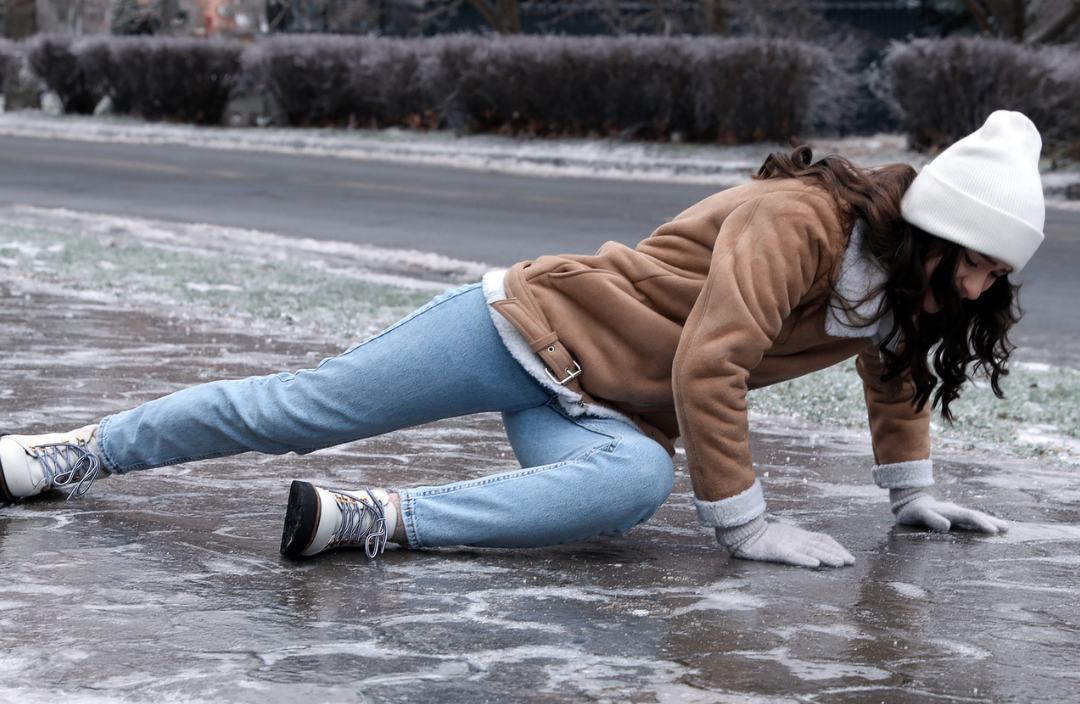As winter blankets our surroundings in snow and ice, the risk of slip and fall accidents at your home or business increases significantly. In this blog, we’ll discuss slip and fall claims related to snow, ice, and wet surfaces. Additionally, we’ll explore steps you can take to help mitigate these risks.
Understanding slip and fall claims
Property owners or renters are responsible for keeping their premises reasonably safe for others. Insurance claims may arise when individuals suffer injuries from icy sidewalks, snowy parking lots, or wet entryways. These claims can be costly.
Some factors that can impact the value of a slip and fall claim include:
-
The type of injury (i.e., temporary vs. permanent).
-
The extent of medical treatment required for the injury.
-
The amount of time, if any, the claimant takes off work due to his or her injuries.
-
Out-of-pocket expenses paid by the claimant.
-
The severity of pain and suffering experienced by the claimant.
Elements of slip and fall claims
Typically, when a person is injured in a slip and fall accident, he or she brings a claim of negligence against the landowner or occupier. While each state has different case law regarding the elements of a negligence claim, it’s universally recognized that a negligence claim consists of four elements: duty of care, breach of the duty of care, causation, and damages.
Duty of care
In general, property owners and possessors have a duty to exercise reasonable care to prevent foreseeable hazards that could cause injury to others. The level of care required depends on the relationship between the injured person and the property owner or possessor. For example, individuals who are present on a property for commercial purposes, such as customers at a store, are owed the highest legal duty by the owner or occupier of the premises. While the duty of care owed to individuals who trespass on a person’s land is little to none.
Breach of the duty of care
In order for an individual injured on a premises to succeed on his or her negligence claim, it must be proven that the landowner or occupier breached the duty of care owed to the injured person.
Generally, in order for a claimant to show that a duty was breached, the landowner or possessor must have had notice of the hazardous condition. That notice could be actual, meaning the owner knew of the condition, or constructive, meaning that the owner should have known of it.
Some examples of the breach of the duty of care (i.e., negligence) may include:
- Failing to address known hazards.
- Not completing adequate maintenance.
- Not providing proper warnings.
Causation
A third factor that must be demonstrated to succeed on a negligence claim is causation, meaning the injured party must establish a connection between the property owner’s negligence and the injuries that ensued. This means that the breach of the duty of care owed to the injured individual was the direct and proximate cause of the injury sustained.
Damages
In order to be successful in proving negligence, a claimant must prove that he or she was injured.
Remedies for businesses
-
Hire a snow removal contractor.
However, before signing on the dotted line, you should understand the services offered. This can help ensure that your property is taken care of appropriately. -
Keep a salt and shoveling log.
Businesses with large sidewalks or parking lots will likely hire a snow removal contractor. Smaller organizations may choose to shovel their sidewalks. From a cost standpoint, this makes sense, but it opens you up to increased employee liability and injuries. Keeping a shoveling and salting log is a great way to minimize liability. Click here to download the snow and ice inspection log. -
Apply ice melt products.
Use approved ice melt products to prevent the formation of ice patches on surfaces. This application can be crucial for preventing slip and fall accidents. Download our ice melt guide here. -
Ensure proper signage.
Mark hazardous areas with warning signs to alert visitors to potential dangers. -
Educate.
Educate your employees about the importance of snow and ice removal, your process, and how it should be followed. And don’t just stop there. Provide them with reminders throughout the winter season.
Source:
Forbes: Slip and fall lawsuit guide
This article is intended for general educational and illustrative purposes only and should not be construed to communicate legal or professional advice. Further, this article is not an offer to sell insurance. Please consult with your licensed insurance agent for specific coverage details and your insurance eligibility. All policies are subject to the terms, conditions, limitations, definitions, and exclusions contained therein.






